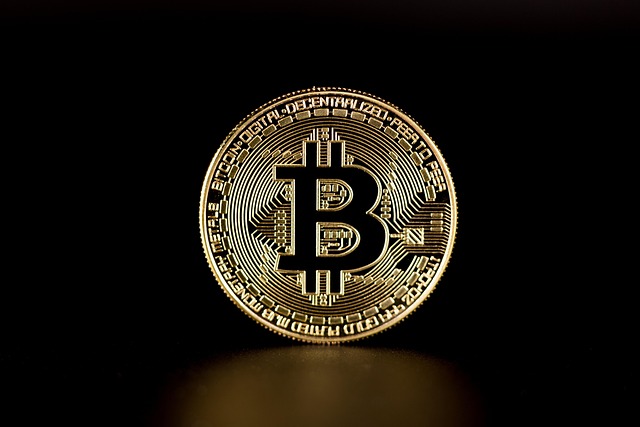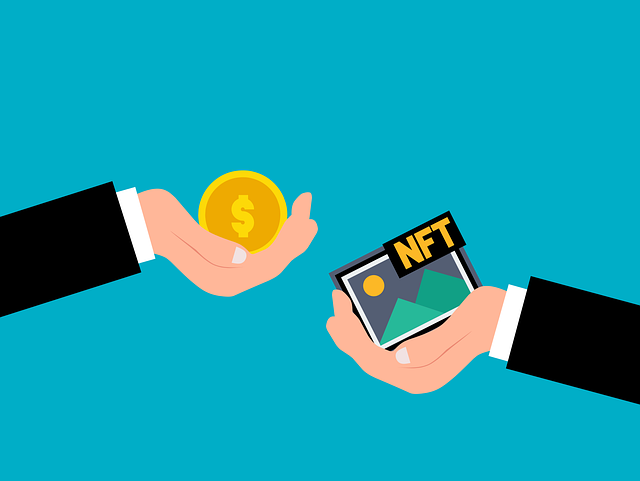Crypto Exchange What Is It — Complete 2025 Guide for Traders
Author: Jameson Richman Expert
Published On: 2025-10-30
Prepared by Jameson Richman and our team of experts with over a decade of experience in cryptocurrency and digital asset analysis. Learn more about us.
Crypto exchange what is it — this guide explains the concept, types, risks, and practical steps to choose and use an exchange in 2025. You’ll learn how centralized and decentralized exchanges differ, what services they offer (spot, margin, futures, staking), how fees and liquidity work, security best practices, regulatory and tax considerations, and actionable steps to open and verify an account. Links to trusted resources and platform options are included so you can start safely and confidently.

What is a crypto exchange?
A crypto exchange is a digital marketplace where people buy, sell, and trade cryptocurrencies. Like stock exchanges for equities, crypto exchanges match buyers and sellers, provide price discovery, and offer trading tools. There are different types of exchanges — centralized exchanges (CEX), decentralized exchanges (DEX), and hybrid models — each with distinct features, custody models, and risks.
For a high-level, encyclopedic overview, see the Wikipedia article on cryptocurrency exchanges.
Key functions of a crypto exchange
- Order matching and execution (market, limit, stop orders)
- Custody — holding private keys (on behalf of users on CEXs) or providing non-custodial interfaces (DEXs)
- Price discovery and liquidity
- Deposit and withdrawal rails (fiat onramps, crypto transfers)
- Additional services: staking, lending, savings, derivatives, API access
Types of crypto exchanges — differences and real-world examples
Centralized exchanges (CEX)
CEXs are companies that operate trading platforms and act as intermediaries. Users deposit funds into the exchange’s wallets and trade within the platform. The exchange maintains order books and often offers high liquidity and many trading pairs.
Pros:
- High liquidity and fast execution
- Advanced trading features (margin, futures, stop-loss)
- Fiat onramps (bank transfers, credit cards)
- Customer support and regulatory compliance in many jurisdictions
Cons:
- Custodial risk — exchange controls private keys
- Subject to hacks or insolvency
- Requires KYC (identity verification) in many countries
Popular CEX examples include Binance, MEXC, Bitget, and Bybit. Open accounts on these platforms here: Register on Binance, Register on MEXC, Register on Bitget, Register on Bybit.
Decentralized exchanges (DEX)
DEXs run on smart contracts and enable peer-to-peer trading without centralized custody. Orders are executed on-chain using automated market makers (AMMs) or order book protocols.
Pros:
- Non-custodial — you keep control of your private keys
- Access to new tokens and composable DeFi primitives
- Often lower barrier to listing tokens (permissionless)
Cons:
- On-chain transaction fees (gas) can be high
- Lower liquidity for some pairs
- Smart contract risk (bugs/exploits)
Hybrid and niche exchanges
Hybrid models combine elements of CEXs and DEXs, while niche exchanges focus on specific regions, token types, or institutional clients. Examples include regulated fiat-onramps for institutional investors and non-custodial aggregators that combine liquidity across DEXs.
How crypto exchanges make money
- Trading fees (maker/taker fees)
- Withdrawal fees and spreads
- Margin and lending interest
- Listing fees and token launch services
- Premium services and subscriptions
Understand fee structures — maker fees reward users who add liquidity, taker fees apply when removing liquidity — and watch for hidden spreads. High-frequency traders often choose exchanges with maker-taker discounts and good API support.

Core components of using an exchange
Trading pairs and liquidity
Trading pairs determine what you can swap directly (e.g., BTC/USDT, ETH/BTC). Liquidity affects slippage and order execution price. Major pairs usually have high liquidity; new or niche altcoins may suffer thin order books.
Order types
- Market order: execute immediately at best available price
- Limit order: execute at a specified price or better
- Stop-loss / Stop-limit: risk management orders to exit or enter at triggered prices
- Trailing stop: dynamic stop that follows price movement
Spot vs derivatives
Spot trading involves actual exchange of crypto assets. Derivatives (futures, perpetual contracts, options) let you speculate on price without owning the underlying asset and often include leverage. Derivatives increase risk (and potential reward) and require careful margin management.
Custody models
CEX: exchange custodial wallets (user trusts exchange). DEX: user controls private keys through wallets like MetaMask or hardware wallets. Custody choice is a trade-off between convenience and control. For long-term holding, many experts recommend self-custody using a hardware wallet.
Security, risks, and how to verify an exchange
Security is a top concern. Hacks, insider theft, rug pulls, and regulatory shutdowns are real risks. Here are best practices to assess safety:
Exchange reputation and audits
- Look for proof-of-reserves audits or third-party attestations.
- Read security disclosures and incident history.
- Check for bug bounty programs and responsible disclosure policies.
Regulatory compliance and licensing
Does the exchange follow KYC/AML, and is it licensed or registered in major jurisdictions? Regulatory compliance doesn’t guarantee safety but reduces certain types of fraud and increases legal recourse. See guidance from official agencies like the U.S. SEC cybersecurity page or the UK FCA for regulatory context.
Technical security measures
- Cold storage for the majority of funds
- Multi-signature wallets for treasury management
- Two-factor authentication (2FA) and withdrawal whitelists
- IP and device management features
For a detailed look at exchange safety and verification steps, consult this review on whether a trading app is safe: Is Amana Trading App Safe — Security Risks and How to Verify.
Common risks
- Hot wallet hacks — exchanges with insufficient cold storage may lose funds
- Liquidity crises and withdrawals freezes during market stress
- Regulatory actions that restrict or freeze services
- Smart contract bugs on DEXs leading to funds being drained
How to choose the right exchange — checklist
- Security history: any past hacks and how they were handled
- Regulatory standing: licenses and compliance in your country
- Liquidity: volume and tightness of spreads for your trading pairs
- Fees & transparency: maker/taker fees, deposit/withdrawal fees, hidden spreads
- Product offering: spot, margin, derivatives, staking, lending
- Customer support: response times and dispute resolution
- Withdrawal limits & KYC: how stringent the documentation requirements are
- APIs and automation: support for trading bots and algorithmic trading
For a comparison of leading platforms and advanced features, see this updated guide on the highest crypto trading platforms in 2025: Highest Crypto Trading Platform Guide 2025.

Practical steps: how to open, verify, and start trading
Step 1 — Select the right platform
Decide between a user-friendly CEX for convenience or a DEX for non-custodial control. Use the checklist above and consider supported fiat methods in your country.
Step 2 — Register and perform KYC
Create an account and complete identity verification if required. KYC often speeds up fiat deposits and increases withdrawal limits but requires sharing personal documents.
Step 3 — Secure your account
- Enable 2FA (use an authenticator app, not SMS)
- Set up withdrawal whitelist addresses
- Use a strong, unique password and a password manager
Step 4 — Fund the account
Deposit fiat (bank transfer, card) or transfer crypto from another wallet. Be aware of deposit fees and network confirmations for crypto transfers.
Step 5 — Place your first trade
Start small. Use limit orders to avoid slippage, and test withdrawals with a small amount first to confirm correct addresses and processes.
Step 6 — Move long-term holdings to cold storage
Keep only funds needed for active trading on the exchange. Transfer long-term holdings to hardware wallets (Ledger, Trezor) or secure non-custodial wallets.
Advanced features and how traders use them
Margin and leverage
Margin trading allows borrowing funds to amplify positions. Leverage increases profit/loss potential. Use low leverage and maintain strict risk management (stop-loss orders).
Derivatives and perpetuals
Derivatives let traders gain exposure without holding the underlying crypto. Funding rates and liquidations are important mechanics to monitor.
Staking, lending, and yield products
Many exchanges offer staking and lending programs. While yields can be attractive, consider counterparty risk and lock-up periods. For those exploring automated strategies, see this practical guide on setting up AI trading bots: How to Set Up an AI Trading Bot — Step-by-Step.
Choosing coins and due diligence
Picking coins involves research on fundamentals, tokenomics, community, and project roadmap. Avoid FOMO and DYOR — do your own research using whitepapers, audited code repositories, and credible community discussions.
For ideas and community sentiment, resources like Reddit and curated guides can help. See this practical piece on “what coin to buy today” and how to analyze picks in 2025: What Coin To Buy Today — Reddit in 2025.

Tax and regulatory considerations
Crypto transactions can create taxable events — trading, converting, receiving interest, staking rewards, and spending crypto may all be taxable depending on your jurisdiction. Keep detailed records of trades, deposits, withdrawals, and income. Consult local tax authority guidance such as the U.S. IRS virtual currency FAQ or your country’s tax agency for specifics.
Common scams, red flags, and how to avoid them
- Unsolicited support messages requesting private keys or passwords — never share them.
- Promises of guaranteed returns or suspiciously high yields — likely Ponzi schemes.
- New exchanges with no team information, no legal presence, or unrealistic bonus programs.
- Phishing websites and fake apps — always verify domain names and install official apps from trusted app stores.
Read case studies and learn from past incidents. This helps build a security mindset and reduces the chance of being scammed.
DEX vs CEX: decision matrix
| Factor | CEX | DEX |
|---|---|---|
| Custody | Exchange holds keys | User controls keys |
| Liquidity | Usually higher for major pairs | Can be lower; depends on pool size |
| Fiat support | Common | Limited (requires onramps) |
| Privacy | KYC required | Often no KYC (but on-chain transparency) |

Practical portfolio management on exchanges
Keep a diversified approach. Use dollar-cost averaging (DCA) to manage entry points rather than lump-sum market timing. Use portfolio trackers and maintain an exit plan. Consider secure cold storage for the bulk of capital and keep only working capital on exchanges.
Monitoring exchange performance and market signals
Watch order book depth, funding rates, and open interest on derivatives to gauge market sentiment and potential volatility. Large withdrawals or deposit spikes can be early signals of stress. For traders competing in events and looking for performance insights, review case studies such as the US Trading Championship winners and their strategies: US Trading Championship 2024 Winners — Insights for 2025.
Using automation safely
Trading bots can be powerful but require stable API keys and strict risk limits. Follow best practices: generate API keys with restricted permissions (no withdrawals), set IP whitelists, and paper-trade before going live. For a step-by-step AI trading bot setup, this guide is helpful: How to Set Up an AI Trading Bot — Practical Guide.

Where to go next — recommended starting platforms
If you’re ready to start, consider well-known exchanges with high liquidity, broad services, and robust security practices. Here are direct links to create accounts:
- Create a Binance account — large spot and derivatives liquidity.
- Create a MEXC account — variety of alt listings and futures.
- Create a Bitget account — strong derivatives and copy trading features.
- Create a Bybit account — competitive fees and futures liquidity.
Checklist: Before you trade
- Research the exchange’s regulatory status and security practices.
- Enable 2FA and set withdrawal restrictions.
- Start with small deposits and test withdrawals.
- Use limit orders to control execution price.
- Keep records for tax reporting.
- Move long-term holdings to cold storage.
Conclusion — crypto exchange what is it and why it matters
Understanding “crypto exchange what is it” goes beyond definition — it’s about matching the right market access, custody model, and risk management to your goals. Exchanges provide essential infrastructure for the crypto ecosystem, but they vary widely in services, safety, and regulatory posture. Prioritize security, start conservatively, and use verified, reputable platforms. Continue educating yourself using trusted resources and guides, and review exchange performance and regulatory updates regularly.
For further reading on platform safety and to compare features, check out these practical guides and case studies: Is Amana Trading App Safe, Highest Crypto Trading Platform Guide 2025, and the US Trading Championship 2024 Winners — Insights.
Ready to open an account and start trading? Use one of the trusted platform links above to register and follow the safety checklist in this guide. If you'd like, I can recommend an exchange tailored to your country, trading experience, and investment goals — tell me your priorities and I’ll suggest the best fit.